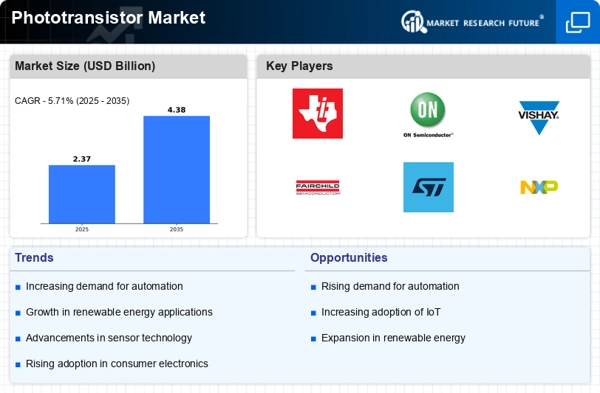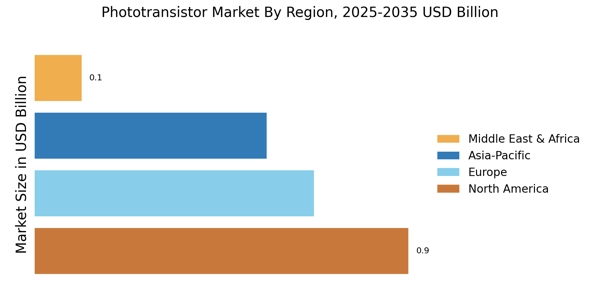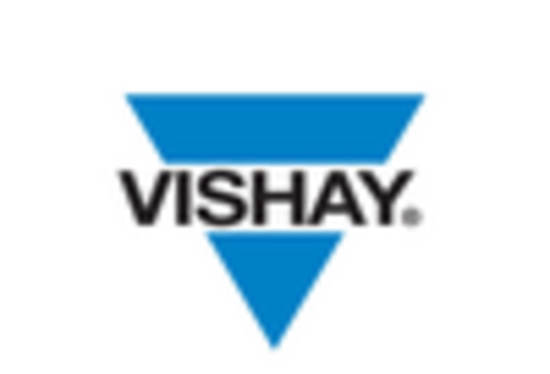Rising Adoption of IoT Devices
The increasing integration of Internet of Things (IoT) devices across various sectors appears to be a pivotal driver for the Phototransistor Market. As smart homes, industrial automation, and connected devices proliferate, the demand for phototransistors, which serve as essential components in light detection and sensing applications, is likely to surge. The market for IoT devices is projected to reach substantial figures, with estimates suggesting a compound annual growth rate of over 25% in the coming years. This trend indicates a robust growth trajectory for the Phototransistor Market, as manufacturers seek to enhance the functionality and efficiency of their products through advanced phototransistor technologies.
Expansion in Consumer Electronics
The consumer electronics sector is experiencing a notable expansion, which seems to be significantly influencing the Phototransistor Market. With the rise in demand for devices such as smartphones, tablets, and smart TVs, the need for efficient light sensors and optical switches is becoming increasingly critical. Reports indicate that the consumer electronics market is expected to grow at a rate of approximately 10% annually. This growth is likely to drive innovations in phototransistor technology, as manufacturers strive to meet the evolving needs of consumers for enhanced performance and energy efficiency. Consequently, the Phototransistor Market is poised to benefit from this upward trend.
Advancements in Automotive Technology
The automotive sector is undergoing rapid technological advancements, which seems to be driving the Phototransistor Market forward. With the rise of electric vehicles and autonomous driving technologies, the need for sophisticated light sensors is becoming more pronounced. Phototransistors are integral to various automotive applications, including light detection for safety systems and driver assistance technologies. The automotive market is expected to witness a growth rate of approximately 15% in the coming years, suggesting a robust demand for phototransistor applications. This trend indicates that the Phototransistor Market is likely to experience significant growth as automotive manufacturers increasingly incorporate advanced sensing technologies into their vehicles.
Growing Demand for Smart Lighting Solutions
The demand for smart lighting solutions appears to be a key driver for the Phototransistor Market. As urban areas expand and energy efficiency becomes a priority, smart lighting systems that utilize phototransistors for light sensing and control are gaining traction. The smart lighting market is projected to grow at a compound annual growth rate of around 18%, reflecting a shift towards more intelligent and adaptive lighting solutions. This growth is likely to enhance the relevance of phototransistors in lighting applications, as manufacturers seek to develop products that align with the increasing consumer preference for energy-efficient and automated lighting systems. Consequently, the Phototransistor Market is expected to benefit from this trend.
Increased Focus on Renewable Energy Solutions
The Phototransistor Industry. As countries and organizations prioritize sustainability, the demand for solar energy systems and related technologies is likely to rise. Phototransistors play a crucial role in solar panel systems, where they are utilized for light detection and energy conversion processes. The renewable energy market is projected to grow substantially, with estimates suggesting a compound annual growth rate of around 20%. This growth trajectory indicates a promising outlook for the Phototransistor Market, as manufacturers align their products with the increasing demand for clean energy solutions.














Leave a Comment